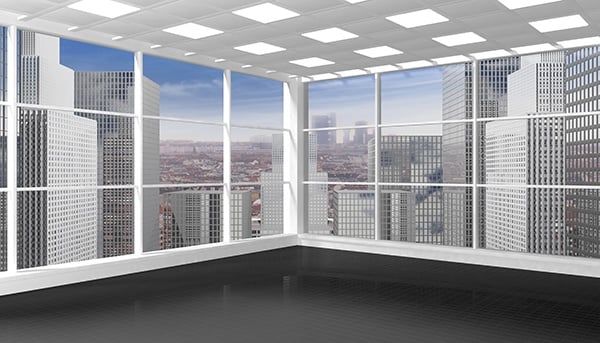
The modern office isn't like the office warrens of the Mad Men days, the cubicle farms of the 1980s or the wide-open spaces of a trading floor or a high-tech open office. Instead, it draws a balance between collaboration and privacy and leverages technology to improve efficiency and worker satisfaction. Here are the three must-haves for any new office space project that your company is considering.
In-Office Amenity Spaces
Conference rooms and a generic break room aren't enough anymore. The key to work-life balance with Millennials is to bring their lives into the workplace. En suite cafes and gyms allow them to do what they'd already be doing without having to leave the office. This is good for them and, ultimately, good for you since it enables them to spend more time at work.
Amenity spaces don't only allow your workers to increase their in-office hours. They also give them new places to work. A bank of treadmills can allow for indoor versions of Steve Jobs' famous "let's take a walk" meetings. Having a cafe in your office space allows your workers to get a change of scenery without having to spend their money -- and your time -- on going to the Starbucks down the block.
Private Workspaces
The other key to building modern office space that works is to make privacy available to everyone who needs it. This is a very different model from the hierarchical system that companies used in the past. It isn't that managers get offices, senior managers get nice offices and everyone else gets cubes. Instead, it's that everyone gets the office space they need to do their jobs when they need it.
When a senior manager isn't at the office, he or she gets no space. A programmer that needs to solve a tough problem should get an office with a workstation. Administrative staff get access to small 45-or-so square foot rooms with a desk and a phone so that they can duck away from their workstation and make a personal call. Small teams get small rooms, while big teams can take over large rooms. The whole idea is to have a wide range of spaces -- many of which are private -- and make them available to people as they need them.
Sensors, Sensors Everywhere
Modern office space can be chaotic, especially from a management point of view. With people coming and going, it can be hard to provide the right office space and the right services for all of their needs.
The sensor technology that is revolutionizing building energy efficiency is also finding its way into other areas of building operation. At the most basic level, motion sensors turn lights on when an office is in use and off when it gets vacated. With an elaborate multi-zone HVAC system, the building can also use sensors to only heat and cool areas that are being used, further saving energy. These are technologies that are readily available today.
Proximity and motion sensors can also tell you which spaces are being used and which are vacant. With the right supporting building control software, a workstation could let the up-front staff know when a worker has occupied it. After they leave, the same software could let the worker know that the space will be made available if they don't go back into it. This lets you keep your office space more fully utilized.
As office space continues to evolve, human needs remain the same. People need a place to relax and a place to get work done while businesses need to make all of those spaces cost effective.
Other great Office Articles:
The Benefits of Open Office Space
What CEOs Need From Office Space
Six Amenities to Look for in Office Space
Subscribe to the REoptimizer blog for more great CRE tips!!








